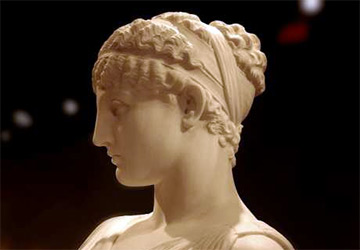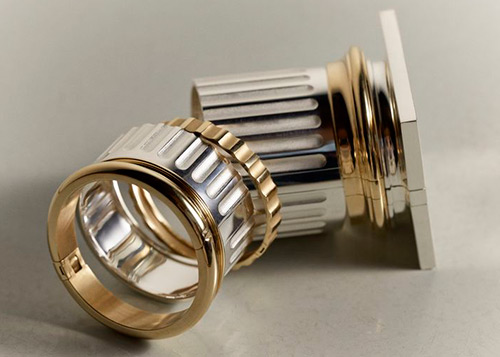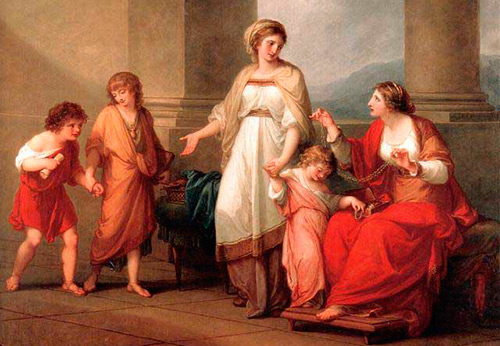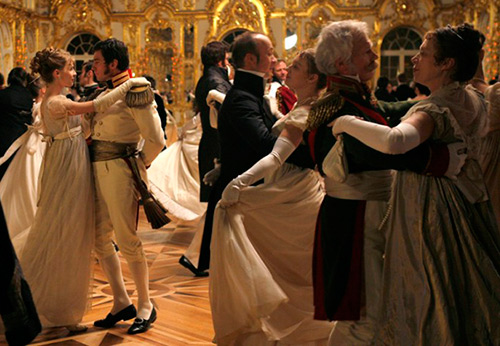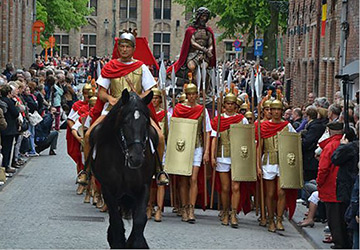Fashion history
Fashion in Ancient Greece and the history of costume
“Nannion covered the finest Ionic chiton with a blue, gold-embroidered himation (himation) with the usual border of hook-shaped stylized waves along the lower edge. In an oriental fashion, the hetera's chemation was thrown over her right shoulder and caught over her back with a buckle on her left side. Thais was dressed in a pink transparent chiton, brought from India or Persia, gathered in soft folds and pinched on her shoulders with five silver pins. "
"Tais Atinskaya" I. Efremov
Ancient Greece, probably, many people associate with marble. White marble sculptures of ancient gods - Aphrodite and Apollo, Zeus and Neptune, Olympians frozen in marble - Discobolus, as well as marble columns of destroyed Greek temples, for example, the ruins of the Athenian acropolis.
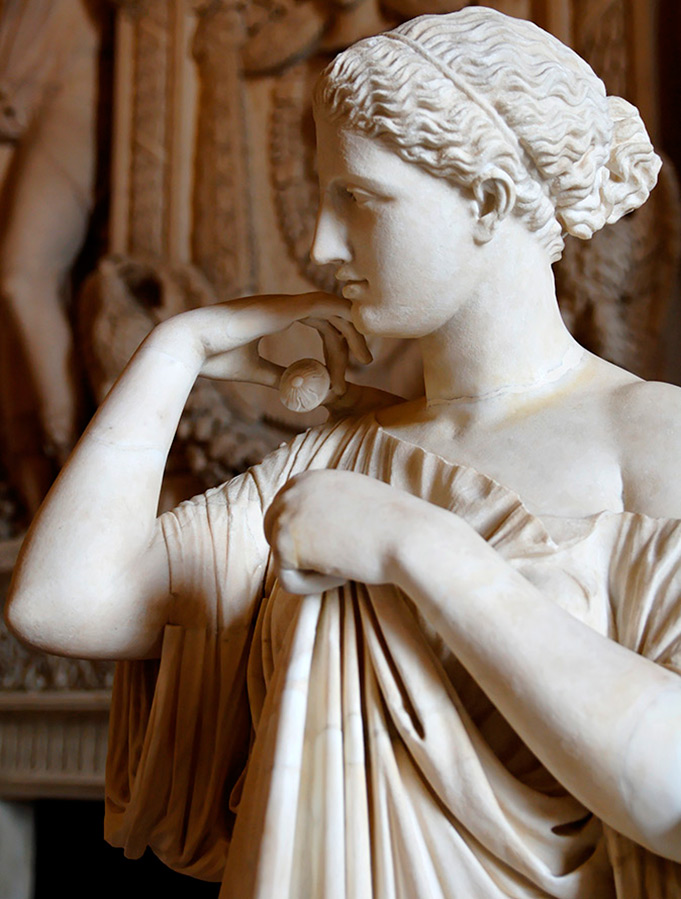
Artemis of Gabia
Dressed in a draped chiton
But not only marble was white, the clothes of the ancient Greeks were also white. At the same time, in their clothes, the Greeks in many ways tried to be like marble statues - it was believed that not a single fold should be wrinkled when walking. It was necessary to walk slowly and smoothly, maintaining a regal posture. And the Greeks could easily afford such a gait.
In ancient Greece, there were slaves who coped with the daily routine, as for the citizens - residents of the city-states of Ancient Greece, they preferred to spend time in theaters, at feasts in disputes about literature and philosophy, or contemplating and enjoying the speeches of speakers at central city squares.
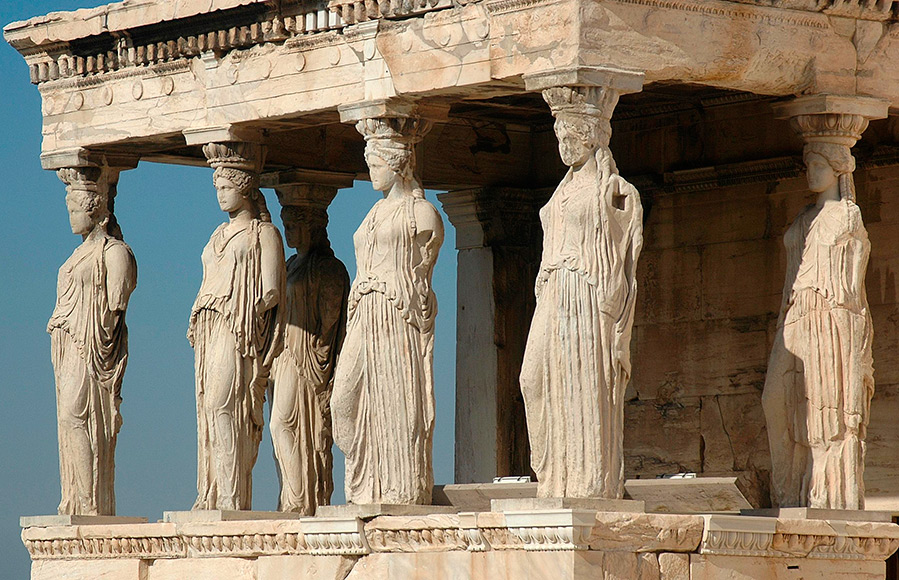
Fabrics for clothing ancient Greeks had to be soft and elastic, because the main feature of the ancient Greek costume is the drapery. The Greeks knew wool, and very often clothes were made of fine wool and linen.
Silk may have been produced on the island of Kos and in Lydia. The Greeks saw cotton only during the conquest campaigns of Alexander the Great - cotton fabric was brought from India.
Heaton - men's and women's underwear, a piece of linen or woolen fabric folded in half, with a slit in the fold for the arm, and sewn on the opposite side, with a slit for the other arm. On the shoulders it was fastened with a brooch, at the waist it was pulled together with a belt.
The Greeks appreciated the craft of weavers. In the mythology of Ancient Greece, the goddesses of fate Moira weave the thread of human fate. The goddess Athena competed in weaving with Arachne, the best weaver in Greece, and defeated her by weaving a plain fabric instead of a patterned fabric. By the way, the Greeks did not like patterns, as well as variegated fabrics.
The clothes of the inhabitants of Ancient Greece were monochromatic - they could be blue, green, yellow, red. But the best and favorite color was white. And only a small geometric or floral ornament could go only along the bottom of the fabric.
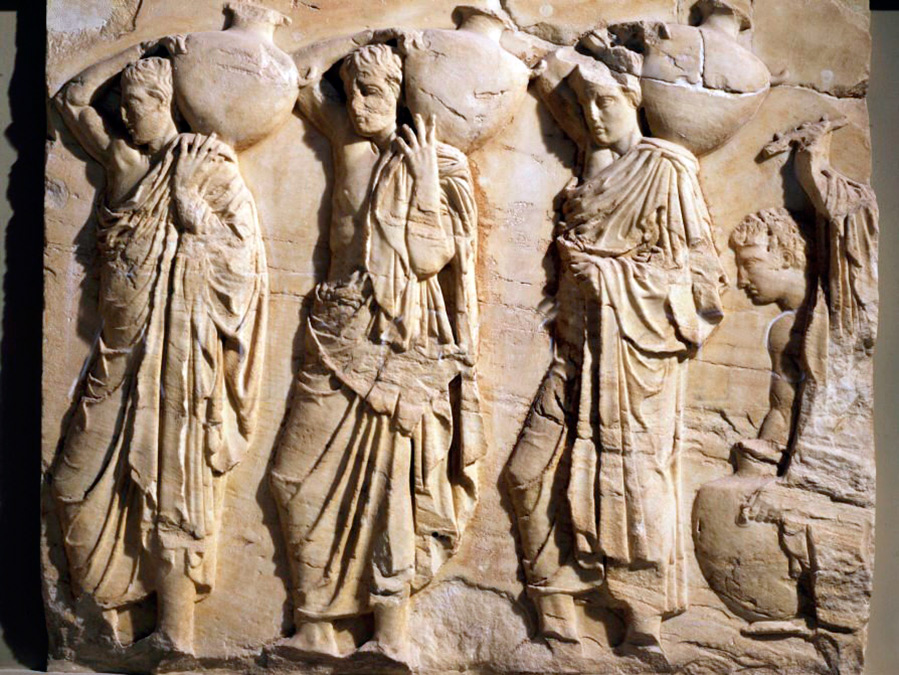
Relief of the work of the ancient Greek sculptor Phidias "Water carriers"
Dressed in cloaks of himation
The clothes themselves were also simple - both men and women wore tunics, and over them cloaks - himations.
Gimatiy (himation) - ancient Greek men's and women's clothing,
a raincoat, which is a piece of rectangular cloth,
draped right on the figure of a man,
fastened with a brooch.
Chiton, both male and female, was made from a single long piece of rectangular fabric - woolen or linen. The fabric was folded in half and belted, and on the shoulder it was chopped off with a fibula clasp. The chiton was necessarily draped. Men wore shorter chitons, the female chiton was often floor-length. The bottom of the chiton was necessarily hemmed. It was believed that only slaves and free people during mourning wear a tunic with an unfinished bottom.
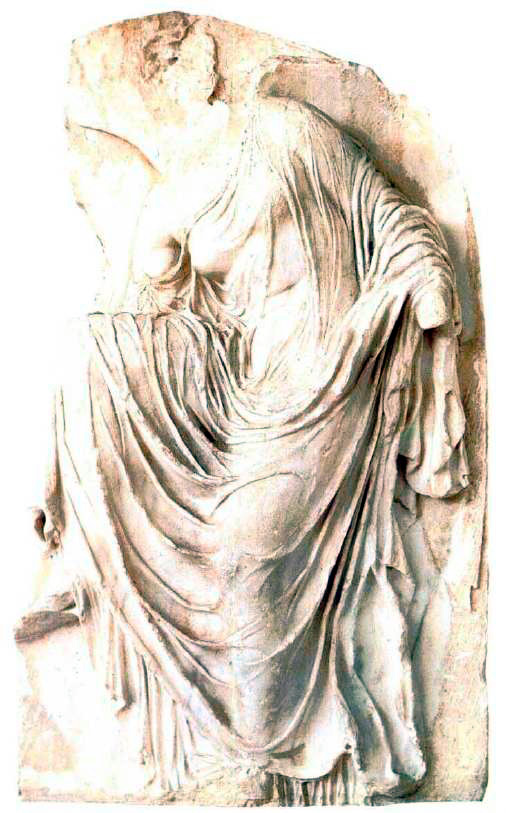
Relief "Nika (goddess of victory) tying a sandal"
In addition to a chiton, women could also wear peplos - a rectangular piece of fabric that was folded in half lengthwise, while the fabric was folded back by about 50 cm from above and, thus, a kind of hood was obtained (this lapel was called diploidy), on the shoulders the peplos was chopped off with fibula fasteners ... A peculiarity of the peplos was the presence of an ornament, it was decorated with a border, and this clothing was not sewn and opened on the right side while walking.
The outer clothing of both men and women in ancient Greece was the cloak of the himation.
In order to feel like an ancient Greek, you will need to take a rectangular piece of fabric (1.7 by 4 meters) and try to wrap yourself in it. By the way, slaves helped the Greeks put on the cloak, and then they laid the very fabric of himation in perfect folds.
They wrapped themselves in a cloak in different ways - the himation could be wrapped around the hips, throwing one of the ends over the arm, put the cloak over the shoulders, or completely wrapped in it.
Men most often draped into the himation in this way: one end of the fabric was gathered into folds and descended from the left shoulder to the chest, the rest of the fabric was on the back and passed under the right arm, then folded in folds and thrown over the left shoulder onto the back.
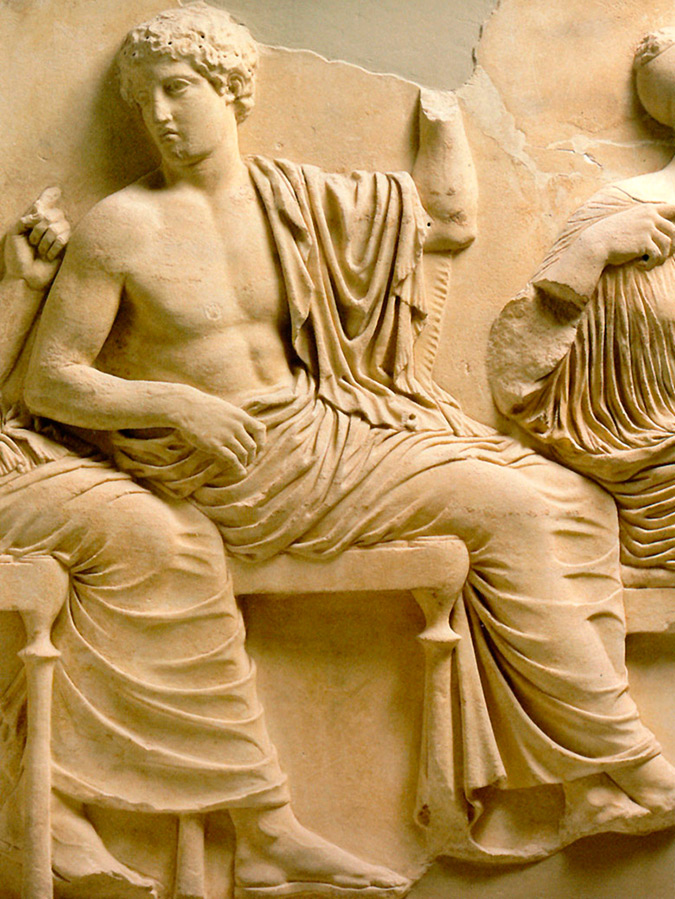
Fragment of ancient Greek relief
The Greeks also had a more comfortable version of the cloak - the mantle cloak, which was worn by travelers, and the ancient Greeks loved to travel. Remember at least Herodotus, the author of the first book on the history of various countries and peoples, although it may well be considered the first guide for ancient tourists.
The mantle cloak was thrown over the shoulders, was short and decorated with ornaments. In addition to the chlamydas, tourists from Antiquity also wore a petasa hat, a hat with wide brims and ties under the chin, and endromids - high laced shoes with open toes. These shoes were also worn by hunters, the goddess Artemis, and Olympic athletes who compete in running. The shoes attached well to the foot and were therefore comfortable.
Chlamyda - a rectangular cloak made of soft woolen fabric,
clothing of warriors and travelers, covering the left side of the body, fastened with a brooch on the right shoulder,
slightly higher than the knee.
In addition to endromids, the Greeks could also wear crepes - shoes with thick soles, attached to the leg with leather laces. Or koturny - shoes of the actors of ancient Greek theaters, a feature of which was a very high thick cork sole, something like the prototype of modern platform shoes.
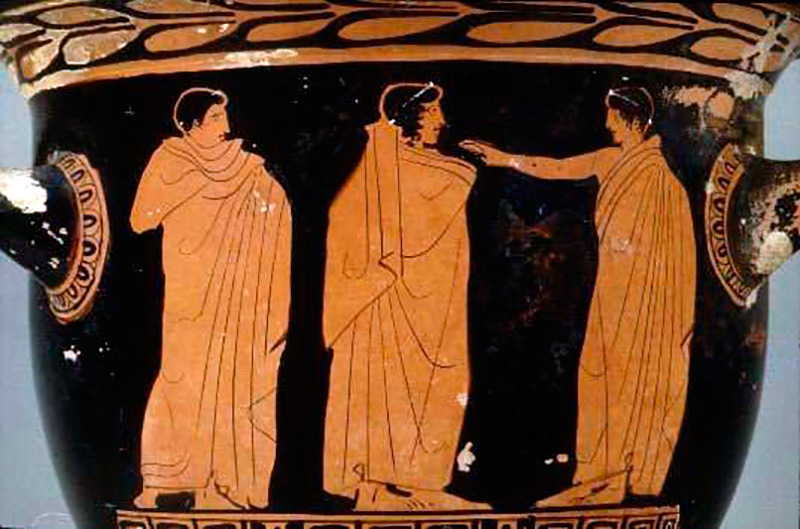
Red-figure vase painting
Figures dressed in cloaks of himation
Women most often wore shoes made of soft colored leather without heels. Also women in Ancient Greece when leaving the house, they had to cover their heads - more often than not, the edge of the cloak was thrown over the head.
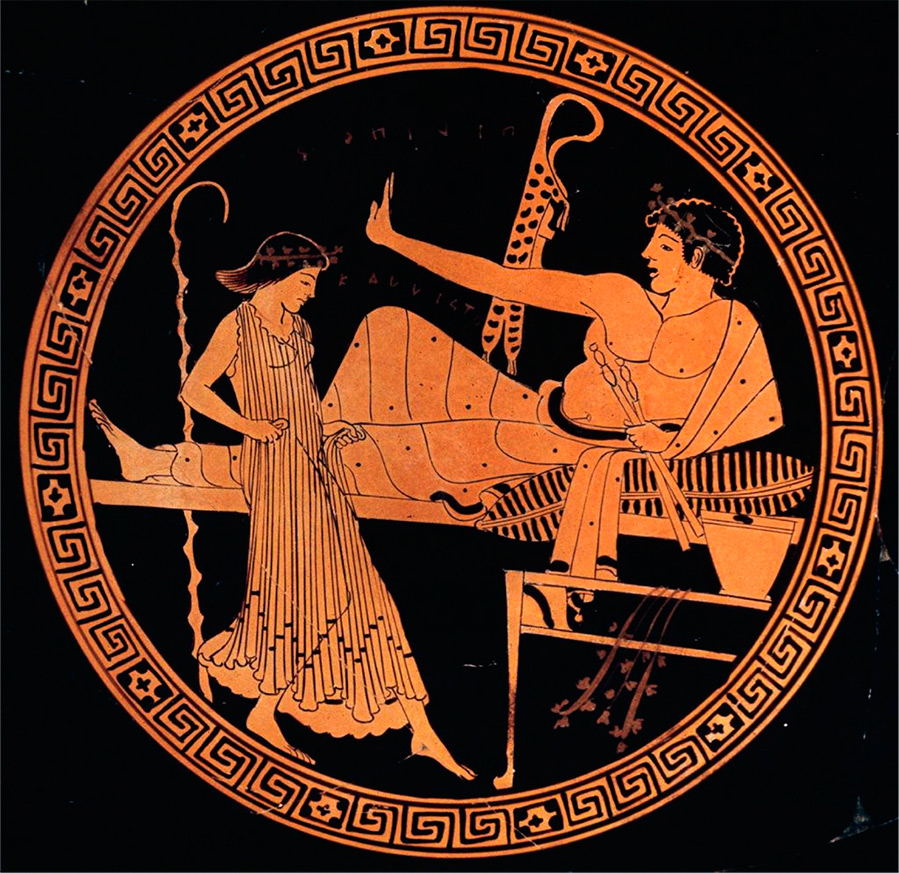
Red-figured kilik depicting a symposium Ancient Greece. 490-480 BC NS.
The girl is dressed in a tunic
Jewelry in Ancient Greece, unlike ancient Egypt, only women wore. The only jewelry that men could wear were rings. Also, it was Greek women who were the first to actively use cosmetics for decoration, and not in connection with religious beliefs, as was the case in Ancient Egypt. And the very word cosmetics is of Greek origin. Both the word cosmetics and the word space are ancient Greek and have a general meaning - order.
Greek women blushed cheeks and painted lips, used aromatic oils, but the most important rule of makeup was the rule of the golden mean. The ancient Greeks believed that in everything, including jewelry and makeup, one should adhere to the rule of the golden mean and try only to complement the natural beauty.
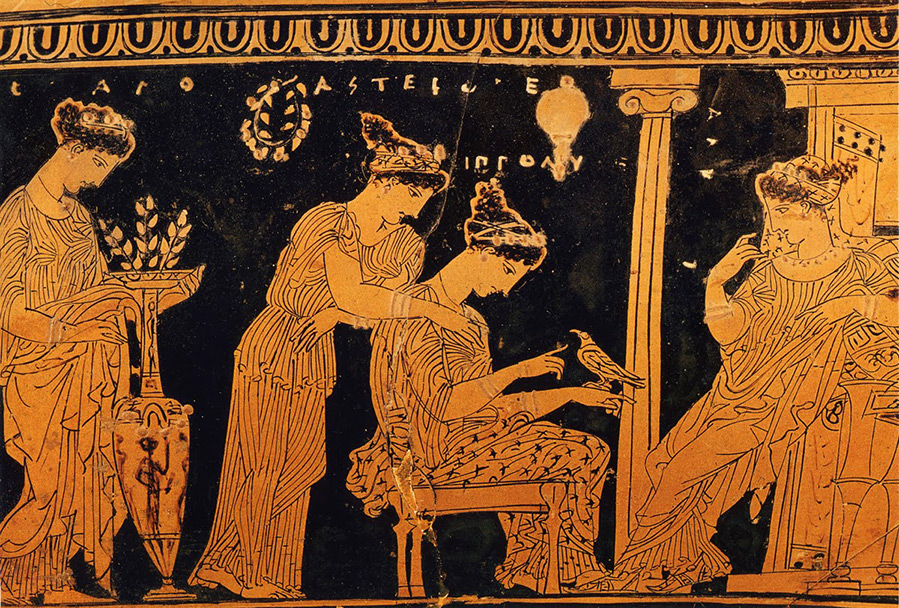
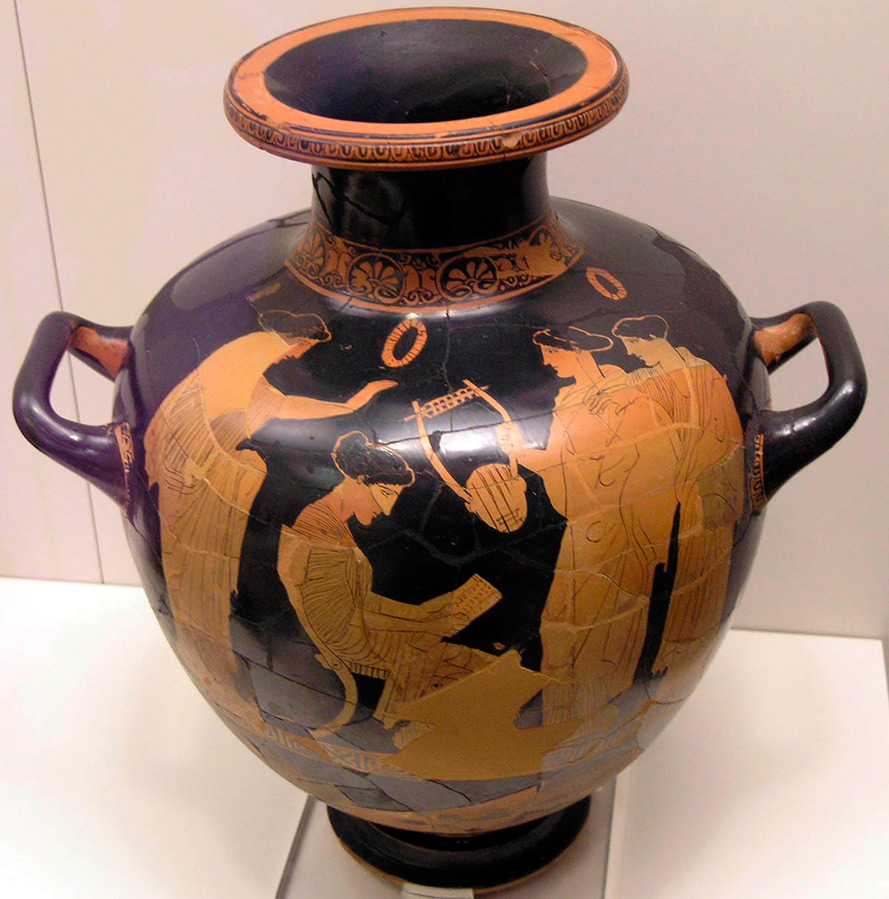
Comments and Reviews
Add a comment
Rating news
Shades of clothing that make women look younger
What shades of hair make women younger: rules and photos
Funny wedding dresses - photos and ideas
12 most expensive down jackets for the winter
How to look 25 at 40: tips from supermodels
Beautiful schoolgirls
Anti-aging haircuts and hairstyles for women
Fashionable skirts for autumn and winter
Fashionable women's trousers for the cold season
Fashionable and stylish sandals for summer 2024
Spring-summer 2024
 Fashionable dresses and tops with thin spaghetti straps
Fashionable dresses and tops with thin spaghetti straps
 Bandana tops: how to wear stylishly and beautifully
Bandana tops: how to wear stylishly and beautifully
 How to put together the perfect men's wardrobe for the summer
How to put together the perfect men's wardrobe for the summer
 Fashionable shorts for spring-summer 2024
Fashionable shorts for spring-summer 2024
 Fashionable skirts for spring-summer 2024: a guide to online shopping
Fashionable skirts for spring-summer 2024: a guide to online shopping
 The most fashionable dresses spring-summer 2024: styles and colors
The most fashionable dresses spring-summer 2024: styles and colors
 Fashionable total look 2024: ideas of images and trends
Fashionable total look 2024: ideas of images and trends
